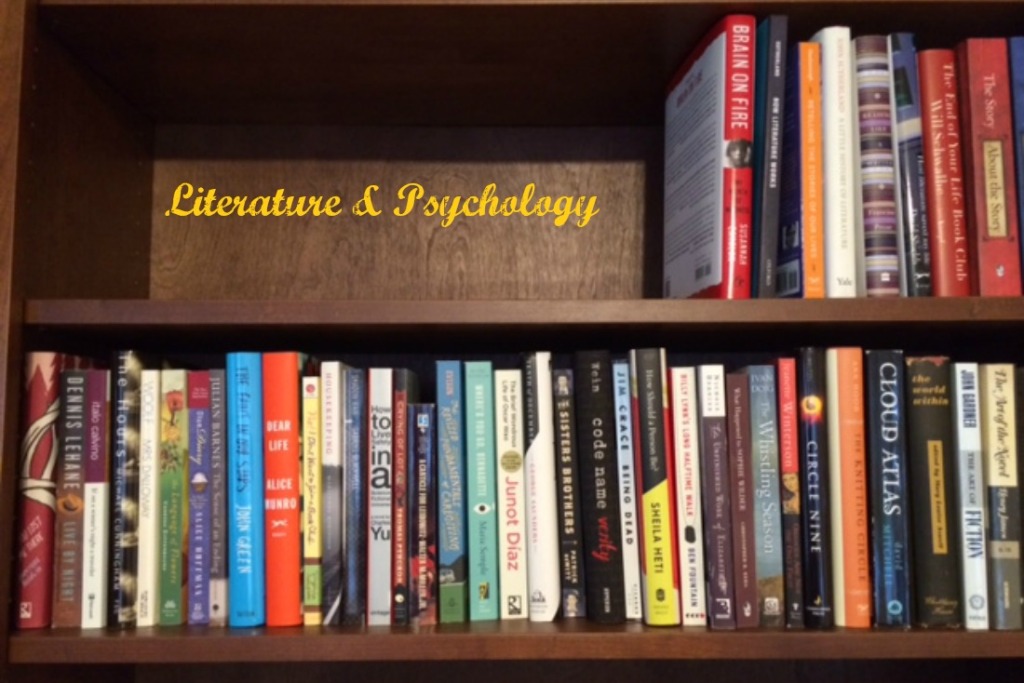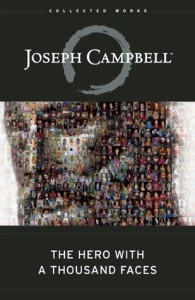Have you noticed how similar are the stories of Luke Skywalker, Frodo Baggins, and Harry Potter? All three of these ordinary fellows set out on a long journey, fraught with danger, to undertake a task with a little help from their friends.
When Joseph Campbell examined the mythologies of the world’s major civilizations, he found this pattern of a heroic quest to be universal. Campbell laid out his findings in The Hero with a Thousand Faces, originally published in 1949. Since the book’s publication, this concept of the heroic journey has become the basis for understanding narrative storytelling and is therefore the perfect topic for beginning the conversation on Literature & Psychology.
In the preface to the original edition of Hero, Campbell wrote that his purpose was
to bring together a host of myths and folktales from every corner of the world, and to let the symbols speak for themselves. The parallels will be immediately apparent; and these will develop a vast and amazingly constant statement of the basic truths by which man has lived throughout the millennia of his residence on the planet. (p. xiii)
Campbell’s tool for understanding the symbolic language of the myths and folktales was psychoanalysis.
Campbell broke the hero’s journey down into three parts: (1) departure, (2) initiation, and (3) return. Here is a very abbreviated outline of the entire process. I encourage you to look into The Hero with a Thousand Faces, where Campbell explains how particular myths and tales from several cultures illustrate the heroic journey.
1. Departure, the call to adventure
The beginning of the quest, the call to adventure, is often a seemingly trivial occurrence, perhaps some kind of blunder. For example, a princess playing with a golden ball follows the ball when it rolls away into the forest; there she meets a frog. Campbell explains the call to adventure as “the awakening of the self”:
But whether small or great, and no matter what the stage or grade of life [of the character], the call rings up the curtain, always, on a mystery of transfiguration—a rite, or moment, of spiritual passage, which, when complete, amounts to a dying and a birth. The familiar life horizon has been outgrown; the old concepts, ideals, and emotional patterns no longer fit; the time for the passing of a threshold is at hand. (pp. 42-43)
It is possible for the destined hero to refuse the call, in which case his world deteriorates into a barren landscape representative of his lack of growth. But the character who has failed to answer the call will receive supernatural aid, usually from an old woman or old man who provides amulets or potions for protection against upcoming dangers. With such help from the personification of his destiny, the hero is able to proceed on his journey. He approaches the threshold he must cross, which separates his present, known world from the darkness and dangers of the unknown world beyond. Once he crosses that threshold, the “hero, instead of conquering or conciliating the power of the threshold, is swallowed into the unknown, and would appear to have died” (p. 74).
2. Initiation
Having crossed the threshold, the hero encounters a strange world of trials and ordeals where his strength and persistence are tested. He often receives help from faithful companions and from the possessions given him by his supernatural protectors during the departure phase of his journey. He gradually gains knowledge as he faces and overcomes one obstacle after another. The attainment of knowledge is frequently symbolized by some valuable possession, such as the Golden Fleece that Jason of Greek mythology must obtain.
The world of trials, where the hero is figuratively tested, represents the mystic experience. This is the place where Campbell found psychoanalysis to be most helpful, for the frightening monsters and eerie landscapes the hero encounters here represent both the depths of the human psyche and the heights of transcendent religious experience, the world where the individual self dissolves into one being with the cosmos. The death of the self must precede the knowledge of cosmic unity. For this reason the hero’s journey is often spoken of as a death followed by rebirth, or the descent into hell and back.
3. Return
After attaining knowledge (or obtaining the valuable object that symbolizes knowledge), the hero must take it back home for the benefit of all. To do this he must cross the return threshold that separates the divine realm from the human world:
The realm of the gods is a forgotten dimension of the world we know. And the exploration of that dimension, either willingly or unwillingly, is the whole sense of the deed of the hero. The values and distinctions that in normal life seem important disappear with the terrifying assimilation of the self into what formerly was only otherness. (p. 188)
And having crossed the threshold back into the world of man, the hero faces yet another difficult task:
How render back into light-world language the speech-defying pronouncements of the dark? How represent on a two-dimensional surface a three-dimensional form, or in a three-dimensional image a multi-dimensional meaning? . . . How communicate to people who insist on the exclusive evidence of their senses the message of the all-generating void? (pp. 188-189)
Like Frodo Baggins, the hero returns as a different person than the one who initially left home. Having been reborn, he cannot simply take up his life where he left it. And the returned hero is not only different from the person he used to be; he is also different from everyone else who has not experienced his quest.
The myths and tales that Joseph Campbell analyzed come from ancient civilizations. In more modern literature the external journey to unknown lands often becomes an internal journey in search of self-knowledge and personal growth. Yet we continue to respond to the pattern of the hero’s journey, as evidenced by the enormous popularity of the Star Wars films, J.R.R. Tolkien’s Lord of the Rings trilogy (both books and films), and the Harry Potter series.
Reference:
Joseph Campbell, The Hero with a Thousand Faces, 3rd ed. (New World Library, 2008). The Collected Works of Joseph Campbell.


